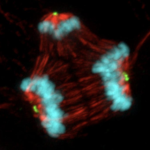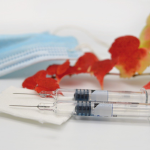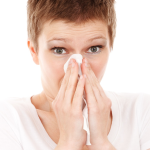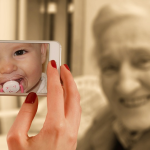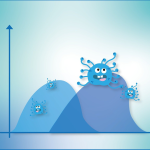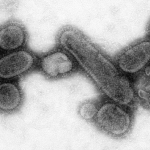The uptake of the current COVID vaccine is running at about 7% of the U.S. population. Pfizer is taking a significant write-off. After the pandemic, our trust in vaccinations has reached a nadir. It's a far cry from our behavior concerning smallpox in 1947 when, over eight days, over 4 million New Yorkers were vaccinated. Or compared to 1961, when 90% of the at-risk population got vaccinated against polio.
Disease
While largely ineffective medications for the treatment of Alzheimer’s Disease have gotten a great deal of press, an “orphan” disease – sickle cell disease – is in a similar situation. It is a devastating disease, and there seems to be a gene treatment on the horizon, one that comes with risks and benefits. How do patients calculate what to do?
Answer: It could be. Stress kills. Rarely, but not never. And then there is anxiety, which subsumes a host of related diagnoses. The terms are often co-mingled, with the latter tending to diffuse the dangers of the former. Let’s take a deeper look.
This could be big. All physicians or cancer researchers have been taught forever that a certain class of cancer drugs works by stopping mitosis, hence cancer cell division. However, a group at the University of Wisconsin discovered that everything we thought we knew about drugs like Taxol and vincristine - decades of textbooks - is wrong. The ramifications could reshape cancer drug research.
At the beginning of the year, the CDC and FDA noted “a preliminary safety signal for ischemic stroke among persons aged ≥65 years” who had received the COVID bi-valent vaccine, as well as a similar but "higher" signal in individuals receiving the influenza vaccine at the same time. Now, a study has confirmed that safety signal.
It seems like a bit of common sense: the higher the viral load – in this case of COVID – the greater chance you have to transmit the disease to another. As it turns out, one of the ways we may characterize “infectivity” is when viral load peaks. Omicron infections peak later, and that has clinical implications.
As we age, bones creak, hearing wanes, and cognition diminishes. Promises of rejuvenation have always besieged a vulnerable market seeking the fountain of youth. Now, there seems to be a clinically tested elixir that promises to restore lost brain power – a simple Chinese herbal remedy. So, does it work?
Over the last decade, the Centers for Medicare and Medicaid Services (CMS) launched several initiatives tied to incentives to “providers” to improve care. A peer-reviewed study spins out to interested clinicians the clinical benefits and financial costs of an initiative to reduce cardiovascular disease. The full report to CMS spells out the failures.
The COVID-19 pandemic has virtually – but not entirely – disappeared from public concerns. Nevertheless, new variants are being examined, as are new vaccines intended to counter them.
Long COVID has long been a syndrome in search of a disease and, more importantly, an underlying explanation. A new study in Cell tries to use Occam’s Razor to find the underlying cause. While not truly causal, it is an interesting hypothesis – with lots to unpack.
Alzheimer’s disease is a stealthy killer, quietly and slowly stealing a half million new American minds yearly. The disease should present a major public health emergency, but serious governmental efforts to address the problem began only recently. Sadly, the problem also presents a marvelous marketing opportunity. Leave it to pharma and its affiliates to try and exploit a frightened, nervous, and vulnerable public.
The inconvenience of yearly flu shots prevents many people from getting them, while flu kills thousands of Americans annually. We need vaccines that will provide durable immunity and work against new variants. There is progress.



